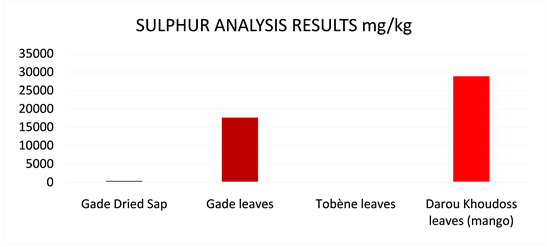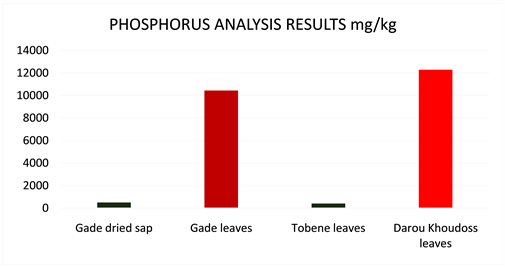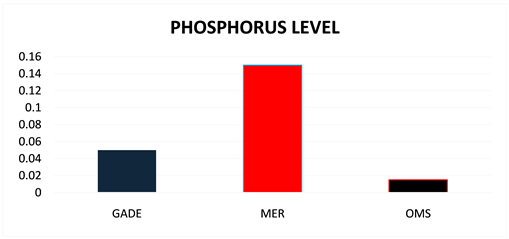1. Introduction
The study area is located in the communes of Darou-Khoudoss, Taiba Ndiaye, Méouane and Mboro. The company known as Industries Chimiques du Sénégal (ICS) is the headquarters of a large mining operation. The ICS’s mining operations is in the natural region of Niayes on the Great Coast in northwestern Senegal. The ICS’s plant is located in the commune of Darou Khoudoss, district of Méouane, department of Tivaouane and region of Thiès. ICS’s activities are the exploitation of phosphate, the manufacture of fertilizers and sulphuric acid which constitutes ICS’s basic raw material needed for the manufacture of phosphoric acid.
Industrial activities have both positive and negative impacts on humans, fauna and flora and the physical environment. Mining [1] is the source of a large part of the world’s greenhouse gas (GHG) emissions such as nitrogen oxides (NOX) and sulphur dioxide (SOX) as well as dust (PM10 and PM2.5) and heavy metals. Therefore, a number of measures are needed to mitigate the foreseeable negative impacts of mining [2] [3] [4] . During their exploitation, mines destroy part of the flora and landscapes and scare away the fauna.
The aim and objective of this study is twofold, it is to analyse and evaluate the impacts of ICS’s activities on the environment and the health of the surrounding communities by measuring the soil, water and air pollution.
2. Methodology
Process used: In the case of this study, a methodological approach was adopted. This approach relates to the different steps to carry out the study. The first step in this study began with a documentary review that allows for the collection of secondary data; the next step was a descent into the field for direct observation and collection of primary data from actors and resource persons of the various structures in place; the final step was the physicochemical analyses and the drafting of the exploitation of the results and analyses of the abatement strategies.
Direct observation: this was an essential step in that it allowed us to see the intensity and extent of direct effects on the environment and indirect effects on humans, as well as the consistency and diversity of exposure to the products. The Niayes area is a particularly coveted territory due to several factors such as: proximity to the sea, urban centers, water availability, soil adaptability, favourable climate and finally the mineral potential in the subsoil. Agriculture is considered to be the economic activity most practiced by the population in the Niayes area.
The establishment of ICS in the Niayes zone to exploit phosphate represents a danger to the environment at all levels (extraction, processing and transport). Open-pit mining occupies a large part of the area and is the cause of several problems such as land clearing, loss of agricultural land, dust, chemical pollution, depletion of the water table, etc.
Interviews with the communities living in the area of the ICS’s plant and the employees located at the ICS’s plant: The interviews included both the local population and the workers of ICS. This was undertaken to better know the degree of exposure to pollution as well as the direct and indirect consequences in the area surrounding ICS’s area of activities.
The objective of the interviews with the communities living in the area around ICS’s area of activities was to locate the problem and to have a guide for the most impacted and sensitive areas. For the workers working within ICS’s area of activities, the objective is to know if the conditions meet their aspirations and respect the Health, Safety and Environmental standards (HSE standards).
Choice of areas for sampling: taking into account the observation visits in the field, four (4) strategic areas were chosen:
Zone 1—Gade Ngomène: located in the commune of Taïba Ndiaye, the villages of Gade Ngoméne and Ngomène are considered the center of ICS’s mining activities (an island that is surrounded by the ICS mines, “see Figure 1”).
Zone 2—Tobène: Located south of the ICS’s area of activities, the village of Tobène in the commune of Méouane is a strategic point because of its proximity to the extension of the mining front and also its proximity to the system that transports phosphorus to the plant (Figure 2).
Zone 3—Darou Khoudoss/Mboro: located north of the plant just at the boundary between Darou Khoudoss and Mboro. This is the area closest to the plant and to the ICS phosphogypsum waste dump (unnatural gypsum from the industrial processing of phosphate ores for the manufacture of phosphoric acid).
Zone 4—Weuta-Mer (northwest of Mboro): In this part of the beach of Weuta are the installations for the discharge of liquid waste from ICS at sea level (Figure 3).
![]()
![]()
![]()
Figure 2. Impact of ICS pollution in Tobène village, images taken on February 04, 2022.
![]()
![]()
![]()
Figure 3. ICS waste dumping site at sea level in the village of Weuta, images taken on February 10, 2022.
3. Results and Discussions
3.1. Physicochemical Analysis Results of Sulphur Fumes on Tree Leaves and Sap
XRF fluorescence spectrometry, an analytical technique that provides quantitative elemental analyses was used (Table 1)
The results of analysis of sulphur fumes on leaf samples show concentrations that exceed more than two times the acute toxicity, more than eight (8) times the skin toxicity, and more than three thousand (3000) times the acute inhalation toxicity at Gade. In Darou Khoudoss these values are three times more, more than fourteen (14) times and more than five thousand (5000) times for acute inhalation toxicity (Table 2). At the time when the samples of leaves taken in Tobène do not present any danger on the human organism. This is explained by the significant distance between Tobène and the acid workshops of the factory. It should also be noted at Gade, the presence of sulphur even on the dry sap of dead trees (353.34). (Graphic 1)
![]()
Table 2. Sulphur toxicity thresholds.

Graphic 1. Sulphur analysis results.
The high presence of sulphur on leaves and tree sap in Gade and Darou Khoudoss-Mboro also shows and confirms the air pollution from the ICS acid workshops. The consequences are very visible on the ground (see Table 1). The area is very dilapidated with heavy deforestation without forgetting the consequences on human health.
3.2. Results of Phosphorus Analysis on Leaves and Sap of the Flora
XRF fluorescence spectrometry, an analytical technique that provides elemental quantitative analysis was used (Table 3).
The high levels of phosphorus on the leaves and sap of the trees confirm the high level of pollution from the phosphoric acid workshops and mining dust (PM). It should also be noted that the Tobene area starts to be affected by pollution as it crosses the mining front. The results show a high exposure to phosphate in the area. (Graphic 2)
Just on the basis of the daily intake values (1000 mg/day or more) and the related pathologies, we can alarm and confirm the health risks to which the populations of the area are exposed. The levels in Gade and on the border of Darou Khoudoss-Mboro are very high, even excessive.
4. Results of the Physicochemical Analysis of Water and Soil
4.1. Water Analysis
Atomic absorption was used for soil analysis. It is a very precise and particularly sensitive method of analysis used for the determination of the concentration of minerals in solution (Table 4). The protocol was carried out according to the Afnor standards.
The presence of phosphorus at such a high concentration can be explained by the nature of the endogenous rock and the consequences of environmentally unfriendly practices and methods by the ICS within the ICS’s area of activities. As far as sea water is concerned, the phosphorus level confirms the non-treatment of ICS wastes which are directly discharged at sea level. (Graphic 3)

Graphic 2. Phosphorus analysis results.
![]()
Table 3. Phosphorus analysis results.
![]()
Table 4. Tap and sea water test results in mg/L.

Graphic 3. Phosphorus levels in the waters of Gade and the Weuta Sea.
On the analyses carried out, the element that causes concern is phosphorus, which has a concentration exceeding three times the normal level at Gade.
The dumping of ICS waste at sea level is an ecological disaster with health and economic consequences (local fishing). These phosphorus compounds being concentrated in the waters can jeopardize the whole balance of these ecosystems with serious problems (loss of fish and the development of blue green algae).
4.2. Physicochemical Analysis of Soils
Atomic absorption has been used for soil analysis. It is a very precise and particularly sensitive method of analysis used for the determination of the concentration of minerals in solution (Table 5). The protocol was carried out according to the Afnor standards.
Apart from sulphur and phosphorus, it is also important to analyze metals. Heavy metals in soil come from both natural and anthropogenic sources. Natural sources are primarily attributed to lithogenesis, weathering, erosion and other geological processes4. Anthropogenic sources include mining, industrial activities, traffic emissions, and agricultural activities (primarily the use of pesticides and chemical fertilizers) [5] - [11] .
Excessive levels of phosphorus are found in Gade. A high concentration of phosphorus should be noted in Tobéne (the extension of the mining front). These results confirm a severe pollution of the ICS activities due to their non-environmentally friendly practices. (Graphic 4)
![]()
Graphic 4. Phosphorus levels in the soils of Gade, Tobène and Darou-Khoudoss-Mboro.
The high concentration of phosphorus in the area will lead to soil pollution with metals, organic micropollutants and pathogenic microorganisms. [12] [13] [14] [15] Excess phosphorus contributes to the eutrophication of soils and surface waters and can also introduce heavy metals like cadmium into the environment. This certainly explains our high cadmium levels (0.88, 0.88 and 0.83 from Gade, Tobène and Darou khoudoss respectively).
The ICS use raw materials extracted near the surface of the ground. Degradations cannot be observed at the extraction site. The impacts on the landscape are the most visible, they are translated by a modification of the physical environment. The establishment of the plant in an agricultural area affects the income provided by agricultural production, the people most affected are farmers and breeders. The dust deposits along the mining and traffic routes lead to a multiplication of tree foliage, and accentuate the stress of young plants that grow with difficulty, while older plants seem to adapt well. [16] [17] [18] [19]
5. Conclusion
In view of these results, it is clear that there is severe air, water and soil pollution in the area in terms of sulphur and phosphorus. The activities of the ICS disturb the entire ecosystem with multiple environmental and health consequences. With excessive levels of sulphur and phosphorus, the situation of villages such as Gade and Ngomene and the village of Darou-Khoudoss and its border with Mboro is more than catastrophic and it is urgent to take the necessary measures to improve their living environment. Facing the negative effects of the pollutants of the ICS on the health of the surrounding populations and the quality of their environment, eco-citizen behaviours is more necessary to shape real actors of the anti-pollution fight. An efficient participation of the populations, the relays, the sentinels and the creation of a platform is essential so that the ICS can take seriously into account the recommendations.
Acknowledgements
This work was funded by Natural Justice, Hub de Dakar. The authors would like to thank Natural Justice, Hub de Dakar for its support and commitment to environmental preservation.
Annexes
1) Physicochemical analysis results
2) WHO standard